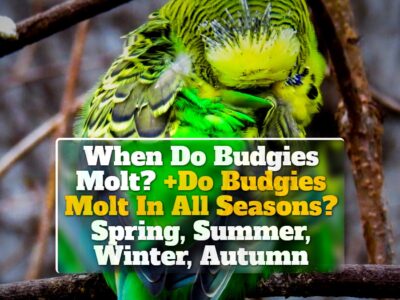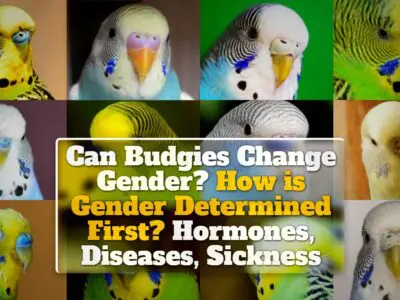The duration of a budgie’s molt can vary depending on several factors, including age, health, diet, seasonal changes, hormonal factors, and stress.
Each budgie is unique, but on average, in a home environment, where budgies have access to more light, food, and comfortable temperatures, the molt typically lasts between two and three weeks.
As someone who once owned a beautiful budgie, I’ve seen first-hand how this little creature goes through its moulting process.
The journey from shedding old feathers to growing new ones can be quite fascinating, and I’m eager to share my knowledge and experiences with you.
Let’s dive in and explore the factors that can affect the length of a budgie’s molt.
What Are The Reasons That Prolong Or Change The Moulting Period Of Budgerigars?
Moulting is a normal part of a bird’s life, but it can be influenced and even extended by various factors.
As an experienced bird enthusiast and a previous budgie owner, I’ve come to understand that these beautiful creatures have unique experiences when it comes to moulting.
Let’s take a closer look at the specifics to gain a deeper understanding of the budgie’s world.
Age
Similar to many other animals, the life stage of a budgie plays a significant role in the moulting process.
Young budgies experience their first moult when they’re about 3 to 4 months old.
This initial moult can sometimes be more extended than later moults as their bodies adjust to this new and somewhat confusing experience of shedding and regrowing feathers.
This adjustment period, as a part of their growth, can mean a longer moulting process for young budgies.
Health
A budgie’s health status can influence various physiological processes, including moulting.
Budgies that are unwell or have underlying health conditions may experience an extended moulting period.
Illnesses, malnutrition, and even stress can affect the efficiency of feather regeneration.
Therefore, a budgie in suboptimal health might undergo a longer and more taxing moult.
Diet
The diet of a budgie also directly impacts its moulting.
A nutritious, well-balanced diet is a cornerstone for healthy feather growth.
If a budgie’s diet lacks essential vitamins, minerals, or protein, it can negatively affect the moulting process.
Inadequate nutrition can slow down feather regeneration, extending the moulting period.
Thus, diet has a profound impact on a budgie’s moulting duration.
Seasonal Changes
Our journey through the factors influencing budgie moulting brings us next to seasonal changes.
Budgies, like many bird species, often experience more significant moults during specific times of the year, usually in spring or autumn.
The environmental factors tied to these seasons, such as light intensity, temperature, and day length, can influence the duration of the moult.
Therefore, a change of season may herald an extended moulting period for a budgie.
Hormonal Factors
Moving along, hormonal factors also play a pivotal role in a budgie’s moulting process.
Hormonal imbalances can occur due to various reasons like reproductive activities or endocrine disorders.
These imbalances can impact the moulting pattern and even its duration.
Therefore, a budgie experiencing hormonal changes might see an alteration in its moulting timeline.
Stress And Environmental Factors
Budgies exposed to stressful situations or sudden environmental changes may face a prolonged moulting period.
Stressful situations might include relocation, changes in their cage or living environment, introduction of new birds, or exposure to loud noises.
These stressors can interrupt the normal moulting cycle, potentially leading to an extended moulting period.



